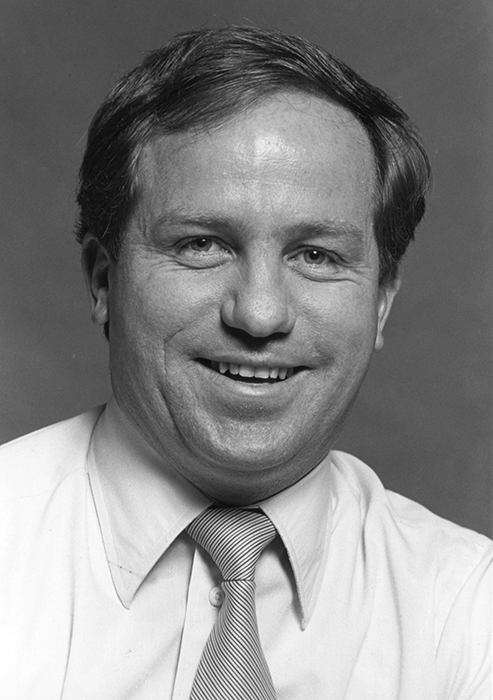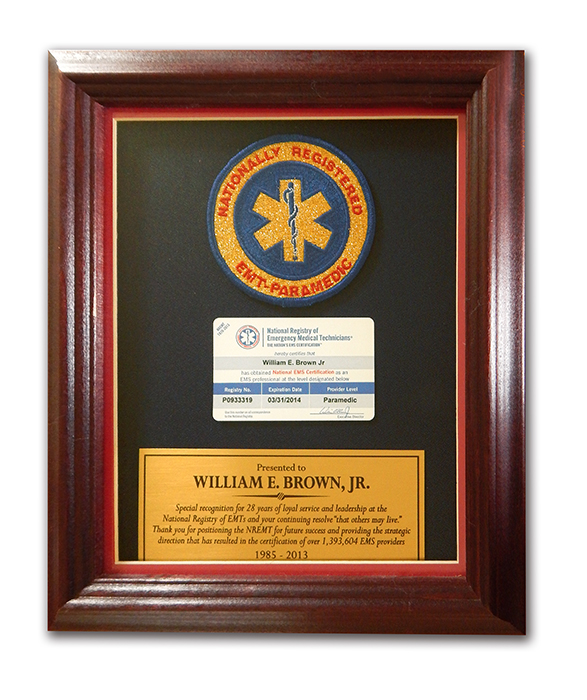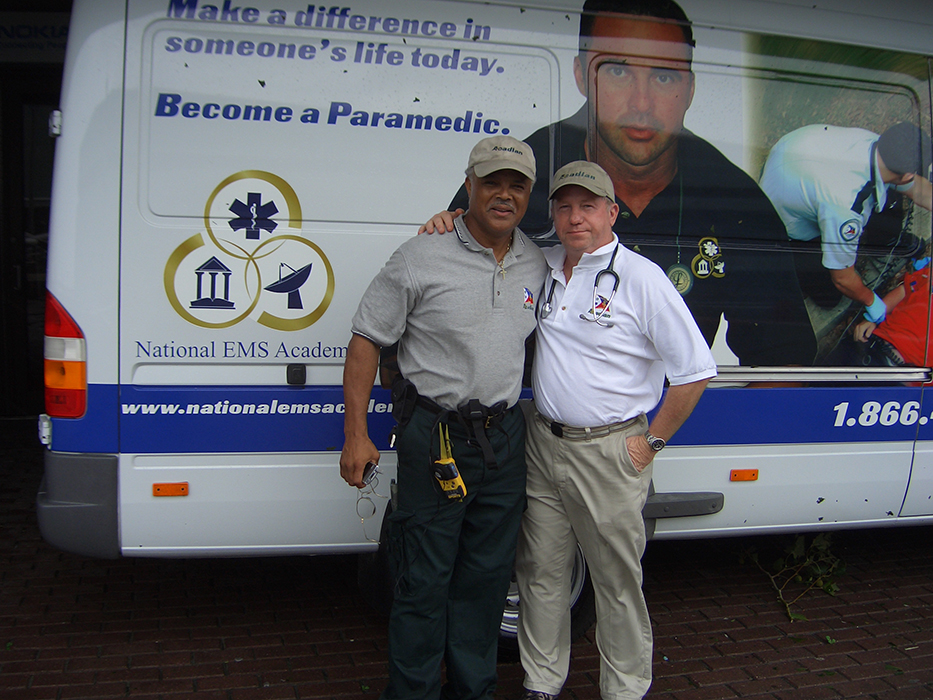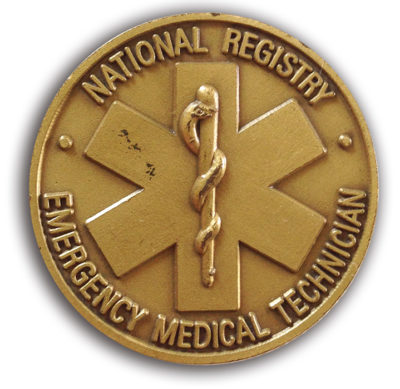![]()
As former Executive Director of the National Registry of Emergency Medical Technicians (NREMT), his experience with certification testing is an invaluable foundation for the development of EMT PASS and AEMT PASS.
His NREMT Years

Advanced Level Certification Coordinator
Bill became employed at the NREMT in March of 1985. He served as the Advanced Level Certification Coordinator. During his tenure, he completed the first ever National Registry Representative’s Manual, which standardized administration of the NREMT Paramedic and Intermediate Practical Examinations across the country. He traveled to many examination sites, trained many NREMT Representatives, and learned many functions of the NREMT system including drafting written items for NREMT examinations at all levels. During this time, Bill also became an expert at understanding the EMS system, national EMS leaders and experts, and helped the NREMT grow at the advanced levels. Bill had the privilege of working for and spending many hours speaking with Rocco V. Morando, the first Executive Director of the NREMT and a true legend in the development of EMS.
Executive Director
In January of 1989, upon the retirement of Mr. Morando, Bill was selected as the Executive Director of the NREMT.
During his initial years as Executive Director, Bill learned how to work with the national EMS community to improve EMS across the U.S. He transitioned the NREMT test item drafting committees to groups of ten subject matter experts who reviewed and edited all items for possible inclusion in NREMT examinations. An important goal of Bill’s was to increase the size of the NREMT item banks, and for this reason the NREMT started hosting additional item writing meets each year. As Executive Director, Bill contributed drafted items for every test-writing meeting he attended throughout his career at the NREMT.
The 1990’s was an active period for Bill and the NREMT. Acceptance of the NREMT as the state licensure examination increased. Testing volumes rose about 10% annually, moving from about 30,000 tests in 1988 to over 70,000 tests in 1999. Item writing meetings increased from three or four per year to between six and eight. Item bank size increased in addition to hosting many different item writers from across the country. Items were all “calibrated” for each level and exam cut scores (the pass/fail score) were validated via a modified Nedelsky formula.
National Committee work (1990’s)
Bill was involved in many national committees that sought to improve EMS education. Among these were:
- 1990 Department of Transportation (DOT), National Highway Traffic Administration’s EMS Training Workshop.
- 1994 DOT EMT-Basic Curriculum, Oversight Committee and a Curriculum author
- 1994 Task Force Member, National EMS Education and Practice Blueprint
- 1996 DOT First Responder Curriculum Oversight Committee
- 1998 DOT Paramedic Curriculum, Oversight Committee and Curriculum author
- 1987-1997, Member, Committee on Accreditation for Paramedic Education Programs
- 1997-2000, Consultant to the Committee on Accreditation for EMS Programs
NREMT in the 2000’s
In 2000, the NREMT began research on a process to move the NREMT examinations from pencil-paper to computer-administered examinations. This research took four years to complete. One outcome of that research was that the NREMT would need to substantially increase the size of its item banks. Therefore, the NREMT started hosting ten item writing meetings per year. This meant that 100 item writers would come to the NREMT each year and critique drafted test questions for pilot testing. Mr. Brown attended almost every meeting and drafted items for every meeting that were reviewed by EMS experts from across the nation.
During this time period, the NREMT hosted over 100 items – writing meetings to increase the size of the NREMT item bank and “feed the mouth” of the pilot item hunger the CAT testing environment required.
During the 2000’s Mr. Brown continued to contribute to the improvement of EMS on a national basis. Among the committees he served on were:
- 2000, DOT National EMS Education Agenda for the Future, Task Force Member
- 2006, DOT National EMS Scope of Practice Model, Committee Member
- 2008, DOT National EMS Education Standards Committee, participant and author

Bill interacted with many national EMS leaders on these committees. He learned the meaning behind the words of the above documents, and the philosophy of how these documents intended to improve EMS care. Bill knew implementation of these agendas, models, and standards would have political implications for states, education programs, and particularly the NREMT. He also knew it would take great courage for state officials, education programs, and the NREMT Board to adopt these “futuristic” concepts, rules, standards, and processes. Bill felt an obligation to every EMS provider, state official, standard setting organization, and NREMT Board members to facilitate adoption of these documents to improve EMS care. These decisions were important concepts for improving EMS, not known by many, skeptical to some, and questioned by everyone. The transition took sustained education of stakeholders, both formal and informal, to implement these documents. Many times confrontation arose, yet the spirit of these documents had to be implemented in order to move EMS forward as a profession. Bill recalls many sleepless nights during this time.
Computer Adaptive Testing
In 2007, after completing a four-year education program with state EMS officials including multiple visits to all 50 states by NREMT staff, the NREMT began testing via computer adaptive tests (CAT) administered by Pearson VUE. At this point, the NREMT had completed more than 70 item-writing meetings. Bill was already proficient in item writing, but participating in nearly all of these meetings increased his skill to a very high level. In addition, Bill attended every standard setting committee of the NREMT as well as every NREMT Board Standard Setting Committee meeting. His understanding of the psychometrics used by the NREMT was complete.
Bill had confidence that the NREMT exams were among the most valid and reliable certification examinations in the nation.
Nevertheless, the process of moving from pencil/paper examinations to computer adaptive examinations was a very scary process for him. In fact, he recalls, “The most fear I ever experienced in EMS was when the final decision to move to CAT was made, all of the committee members looked me in the eye, and asked, ‘Well, what do we do?’ I was worried about many factors that would affect the NREMT, the candidates, and states. In the end, I made the decision that the NREMT would move forward and join the other health care professions in providing a quality examination that was valid and reliable and provided results to candidates the next day. I sweat that decision for months.”
National EMS Education Program Accreditation at the Paramedic Level
The Institute of Medicine (IoM) published a report in 2006 on EMS titled “EMS at the Cross Roads.” The IoM report included a number of recommendations to improve EMS. Among them was that states should implement Paramedic Program Accreditation. This recommendation was made based upon a peer reviewed paper published by Philip Dickison, who at the time was the Certification Coordinator at the NREMT. Phil was completing courses toward a Ph.D. in psychometrics at the Ohio State University. His paper proved that graduates of accredited Paramedic education programs outperformed graduates of non-accredited Paramedic programs in virtually every single demographic on the NREMT Paramedic examination. Accreditation made a difference!
At the behest of the IoM report, Mr. Brown encouraged the NREMT Board of Directors to mandate CoA accreditation for every Paramedic program in the U.S. In 2007 the NREMT Board mandated that beginning in 2013, every graduate who desired National EMS Certification at the Paramedic level had to be educated through an accredited program. This significant change resulted in a major upheaval within the EMS community. As a result, studies were conducted in conjunction with EMS stakeholders. Educational presentations were made. The CoA staff visited nearly every state.
Finally in 2010, with EMS leaders and visionaries understanding the value of accreditation and working with their education programs, so that the National Association of State EMS Officials (NASEMSO) endorsed the NREMT Board’s decision to adopt accreditation. The vision laid out via the 2000 National EMS Education Agenda would finally become a reality.
Bill reflects on those years, saying, “They were difficult. Accreditation was voluntary but many programs and their graduates did not avail themselves to obtain the benefits of accreditation, even though it would improve the knowledge, skills and abilities of Paramedics.
While it was not accepted by everyone, in the end, after years of working with stakeholders and state officials, the concept was finally adopted.”
In 2013 William E. Brown, Jr. retired as the Executive Director of the NREMT. During his time as Director, the NREMT grew from testing nearly 30,000 candidates to a peak of nearly 143,000 candidates; it grew from being used as the licensure examination in 29 states at one or more levels to 46 states in the U.S.
Bill was the recipient of many national EMS honors. This website includes many of his philosophies, values, item writing experiences, networking abilities, accreditation experiences, and service on national EMS committees.

Bill reflects on his career, saying, “It was a great run at improving EMS. I had the privilege of working with an outstanding staff, many outstanding Board members, networking with EMS leaders, and loving every minute of it. Accomplishments are completed by teams, and I am proud to have been one of the members of the team.”

